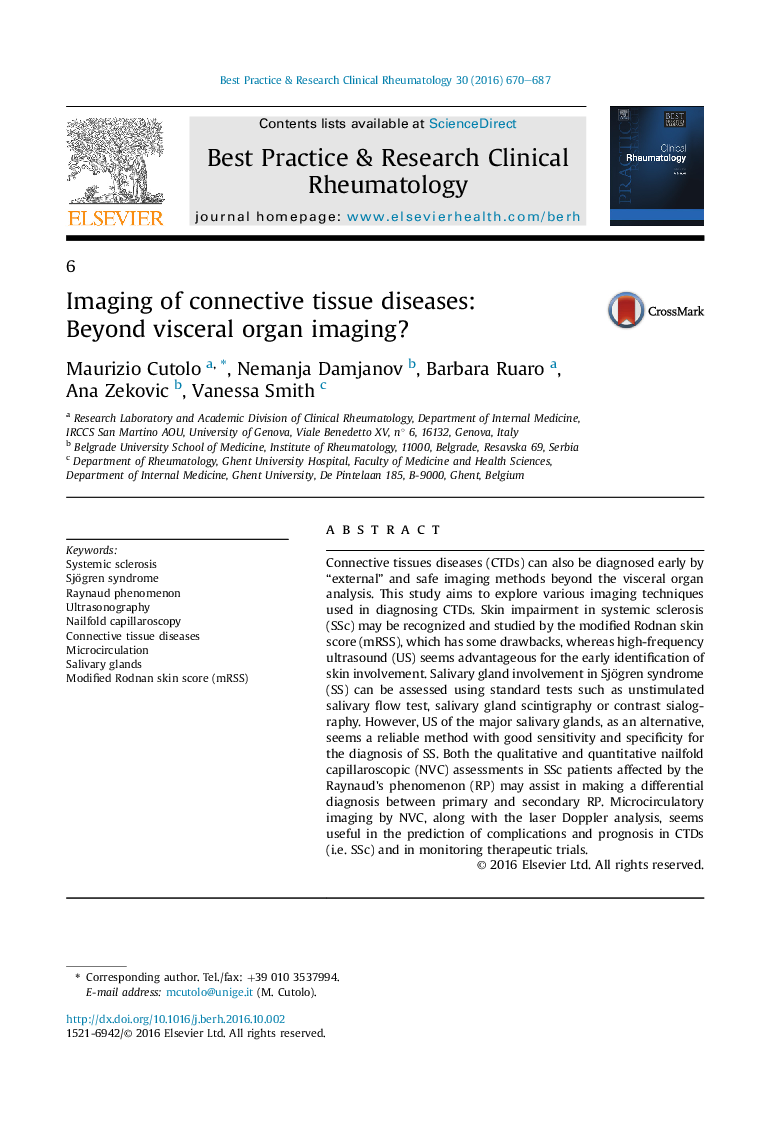| کد مقاله | کد نشریه | سال انتشار | مقاله انگلیسی | نسخه تمام متن |
|---|---|---|---|---|
| 5665518 | 1407755 | 2016 | 18 صفحه PDF | دانلود رایگان |
Connective tissues diseases (CTDs) can also be diagnosed early by “external” and safe imaging methods beyond the visceral organ analysis. This study aims to explore various imaging techniques used in diagnosing CTDs. Skin impairment in systemic sclerosis (SSc) may be recognized and studied by the modified Rodnan skin score (mRSS), which has some drawbacks, whereas high-frequency ultrasound (US) seems advantageous for the early identification of skin involvement. Salivary gland involvement in Sjögren syndrome (SS) can be assessed using standard tests such as unstimulated salivary flow test, salivary gland scintigraphy or contrast sialography. However, US of the major salivary glands, as an alternative, seems a reliable method with good sensitivity and specificity for the diagnosis of SS. Both the qualitative and quantitative nailfold capillaroscopic (NVC) assessments in SSc patients affected by the Raynaud's phenomenon (RP) may assist in making a differential diagnosis between primary and secondary RP. Microcirculatory imaging by NVC, along with the laser Doppler analysis, seems useful in the prediction of complications and prognosis in CTDs (i.e. SSc) and in monitoring therapeutic trials.
Journal: Best Practice & Research Clinical Rheumatology - Volume 30, Issue 4, August 2016, Pages 670-687
